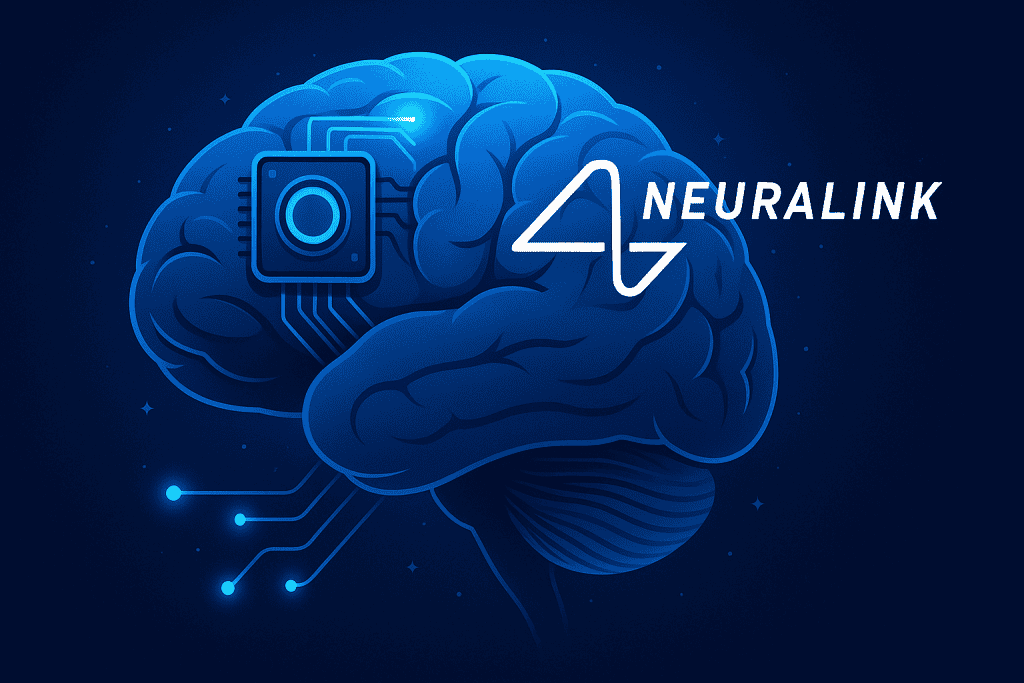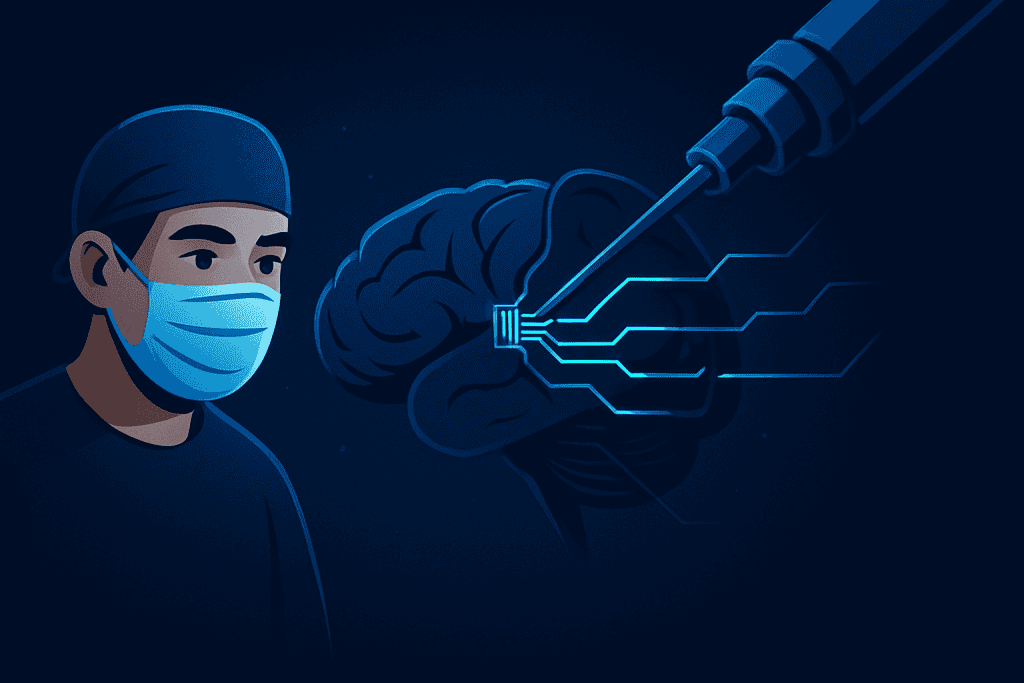Imagine a world where your thoughts alone could control your devices—no typing, no voice commands, just pure brainpower. Sounds like science fiction, right? Well, Neural Link is turning this dream into reality.
Developed by Elon Musk’s Neuralink Corporation, this cutting-edge brain-computer interface (BCI) aims to enhance human cognition, restore mobility to those with paralysis, and even pave the way for direct mind-to-machine communication. But how effective is it? Can it truly change the way we interact with technology?
In this review, we’ll dive deep into Neural Link, exploring its features, usability, and how it stacks up against similar innovations. Let’s get started!
Overview

Neural Link is a brain-computer interface (BCI) designed to facilitate direct communication between the human brain and external devices. By implanting a tiny chip into the brain, it enables users to interact with computers, smartphones, and even prosthetic limbs through neural signals.
Key Features of Neural Link:
- Ultra-Thin Electrodes: These tiny threads (thinner than a human hair) are implanted into the brain to read and transmit neural signals.
- Wireless Connectivity: No external wires—everything is communicated wirelessly to a connected device.
- AI Integration: Neural Link’s AI helps decode neural signals for seamless interaction with external devices.
- Medical Potential: Could help restore mobility, treat neurological disorders, and even enhance human cognition.
In-Depth Analysis
So, how does Neural Link perform in real-world applications? Let’s break it down.
Design & Comfort
Neural Link’s implant is about the size of a coin and sits beneath the skull. Unlike bulky BCIs of the past, this sleek design makes it virtually invisible. Plus, it’s biocompatible, meaning there’s minimal risk of rejection by the body.
Functionality & Performance
Neural Link’s biggest strength is its real-time neural signal processing. Here’s what it can currently do:
- Allow paralyzed individuals to control devices with their thoughts.
- Enhance cognitive functions by providing additional memory storage (potentially in the future).
- Create a seamless interface between humans and AI for rapid learning.
Ease of Use
Despite its complexity, Neural Link is designed for effortless interaction. Users won’t need extensive training—just a calibration process to align neural signals with the system. The interface is intuitive, making it accessible for both medical and non-medical applications.
Potential Risks & Ethical Concerns
While Neural Link promises groundbreaking advancements, it also raises some ethical and medical concerns:
- Surgical Risks: Implanting the device requires brain surgery, which carries inherent risks.
- Data Privacy: Since it reads brain activity, ensuring data security is crucial.
- Human Augmentation: The possibility of cognitive enhancement could lead to social disparities.
Neural Link Comparison
How does Neural Link fare against other BCIs in the market? Let’s compare it with two leading alternatives: Synchron and Kernel.
| Feature | Neural Link | Synchron | Kernel |
|---|---|---|---|
| Technology | Ultra-thin brain implant | Stent-like brain interface | Wearable neuroimaging headset |
| Invasiveness | Requires brain surgery | Minimally invasive | Non-invasive |
| Wireless Connectivity | Yes | Limited | Yes |
| Primary Use Case | Assistive technology & cognitive enhancement | Medical applications (paralysis, stroke recovery) | Brainwave monitoring & research |
| AI Integration | Advanced AI for decoding neural signals | Basic AI processing | Data visualization & AI insights |
While Neural Link offers the most advanced AI integration and seamless wireless connectivity, it does require surgical implantation, making it less accessible compared to non-invasive solutions like Kernel.
Pros and Cons

Before making any conclusions, let’s break down the strengths and weaknesses of Neural Link:
| Pros | Cons |
|---|---|
| Cutting-edge AI integration | Requires invasive surgery |
| Wireless, seamless communication | Ethical and privacy concerns |
| Potential to restore mobility | Expensive and limited accessibility |
| Future cognitive enhancement possibilities | Long-term effects still unknown |
Conclusion
Neural Link represents one of the most groundbreaking innovations in neuroscience. With its potential to restore mobility, enhance cognitive abilities, and revolutionize human-computer interaction, it’s no surprise that people are excited.
However, it’s still in its early stages. While it holds immense promise, concerns around safety, ethics, and accessibility need to be addressed before it becomes widely available. If you’re fascinated by new inventions, Neural Link is definitely one to watch in the coming years.

Final Verdict: Is Neural Link Worth It?
For those with medical conditions like paralysis, Neural Link could be life-changing. But for the average consumer, it’s still more of a futuristic concept than a practical reality.
Rating
It is undoubtedly a game-changer, but its current limitations can’t be ignored. Here’s how it stacks up:
⭐⭐⭐⭐☆ (4/5)
✔ Innovative and groundbreaking
✔ Potential medical breakthroughs
❌ Invasive and costly
FAQs
1. How does it work?
Neural Link is a brain-computer interface that connects the human brain to external devices. It uses ultra-thin electrodes implanted in the brain to read and transmit neural signals, allowing users to control computers and prosthetics with their thoughts.
2. Is it safe for human use?
Currently, Neural Link is still in the experimental phase. While initial animal trials have shown promise, human trials are ongoing. The primary risks include surgical complications and potential long-term effects on brain function.
3. How does Neural Link compare to other BCIs?
Compared to competitors like Synchron and Kernel, Neural Link stands out for its advanced AI processing and wireless capabilities. However, it requires surgical implantation, unlike some non-invasive alternatives.
It is just the beginning of a future where humans and machines seamlessly integrate. While it’s not quite ready for everyday consumers, it’s paving the way for a world where our thoughts control technology. What do you think—excited or skeptical? Let’s discuss!
Resources
- Geek Vibes- How Neuralink is Bridging Minds and Machines
- Udemy- AI & Cognitive Science: Bridging Minds and Machines
- IEEE Xplore- Bridging minds and machines in Industry 5.0: neurobiological approach
- IBM- What Is Machine Learning (ML)?
- Trendz MENA- Neuralink: Bridging the Gap Between Brain and Technology
